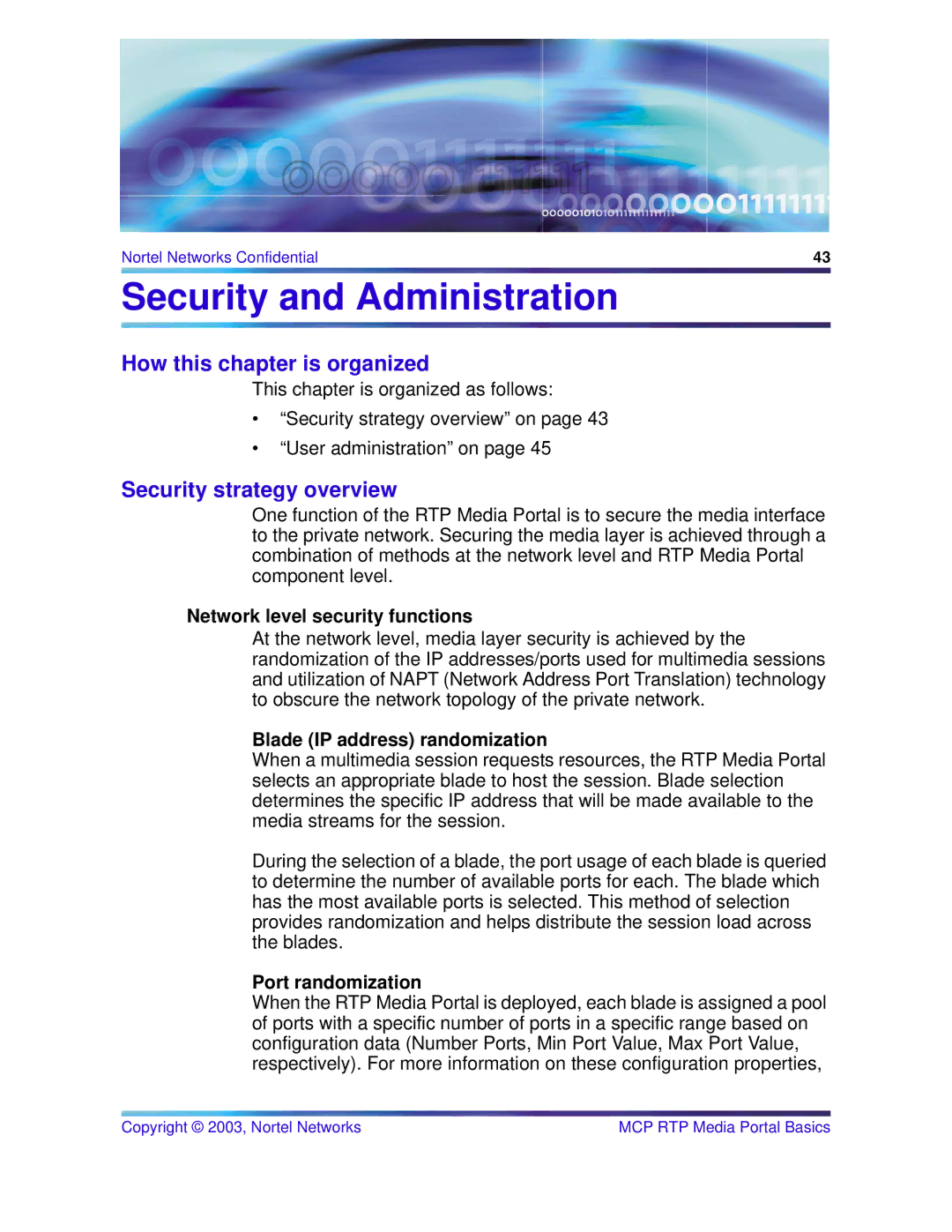
Nortel Networks Confidential | 43 |
|
|
Security and Administration
How this chapter is organized
This chapter is organized as follows:
•“Security strategy overview” on page 43
•“User administration” on page 45
Security strategy overview
One function of the RTP Media Portal is to secure the media interface to the private network. Securing the media layer is achieved through a combination of methods at the network level and RTP Media Portal component level.
Network level security functions
At the network level, media layer security is achieved by the randomization of the IP addresses/ports used for multimedia sessions and utilization of NAPT (Network Address Port Translation) technology to obscure the network topology of the private network.
Blade (IP address) randomization
When a multimedia session requests resources, the RTP Media Portal selects an appropriate blade to host the session. Blade selection determines the specific IP address that will be made available to the media streams for the session.
During the selection of a blade, the port usage of each blade is queried to determine the number of available ports for each. The blade which has the most available ports is selected. This method of selection provides randomization and helps distribute the session load across the blades.
Port randomization
When the RTP Media Portal is deployed, each blade is assigned a pool of ports with a specific number of ports in a specific range based on configuration data (Number Ports, Min Port Value, Max Port Value, respectively). For more information on these configuration properties,
Copyright © 2003, Nortel Networks | MCP RTP Media Portal Basics |
